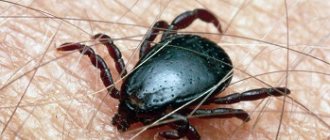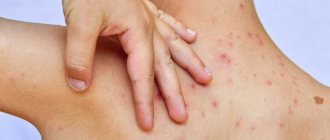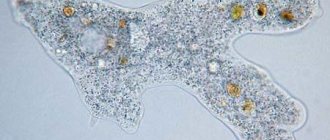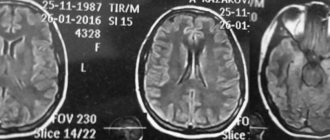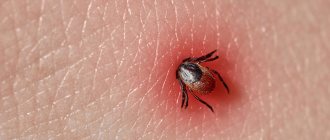The leading cause of viral encephalitis in Asia is Japanese encephalitis virus (JEV). This mosquito-borne flavivirus belongs to a genus of viruses that also includes dengue, yellow fever, and West Nile viruses. The first case of JE was reported in Japan in 1871.
The annual clinical incidence of this disease varies between and within countries, ranging from <1 to >10 per 100,000 population or higher during outbreaks. A recent literature review estimated that nearly 68,000 clinical cases of JE occur annually worldwide, with deaths from the disease ranging from 13,600 to 20,400 cases. JE mainly affects children. Most adults in endemic countries have natural immunity from childhood infection, but the disease can affect people of any age.
Signs and symptoms
Most cases of JE virus infection are mild (with fever and headache) or no obvious symptoms, but about 1 in 250 cases of infection is severe. The incubation period ranges from 4–14 days. In children, the most common initial symptoms of the disease may be pain in the lower abdomen and vomiting. The severe form is characterized by rapid development of high fever, headache, neck stiffness, disorientation, coma, spasms, convulsions, spastic paralysis and possible death. Among symptomatic individuals, the case fatality rate can be as high as 30%.
Among survivors, 20-30% suffer from persistent cognitive, behavioral or neurological problems such as paralysis, recurrent convulsions or loss of speech.
In children
With the development of mosquito encephalitis in children, the nutritional method of transmission of infection is important. That is, a small child becomes infected through certain food products. Most often, children suffer from brain damage.
The brain is responsible for some body functions. Children are characterized by disturbances in consciousness. Up to the development of delusional states and states accompanied by hallucinations.
In children, the disease can be suspected if there is a persistent clinical picture. Most often, the disease is detected in children in the following cases:
- the child shows passivity;
- asthenic conditions of the child;
- the child's movement is impaired;
- body temperature rises;
- fever;
- Strong headache.
All these symptoms reflect a severe picture of the disease. After all, mosquito encephalitis is a persistent disorder in the body’s systems. This disease can cause death in infants.
Mortality is increased in children in the absence of proper treatment. Therefore, in areas of epidemic risk, it is necessary to vaccinate children. This also applies to adults. It is better to prevent a disease than to cure it!
go to top
Transmission of infection
24 countries in the WHO South-East Asia and Western Pacific Regions are at risk of JE transmission, affecting more than three billion people.
JE is transmitted to humans through the bite of infected Culex mosquitoes (mainly Culex tritaeniorhynchus). Once humans are infected, they do not develop sufficient viremia to infect mosquitoes when feeding. The virus exists in a transmission cycle between mosquitoes, pigs and/or waterfowl (enzootic cycle). The disease is mainly found in rural and suburban areas where people are close to these vertebrates.
In most temperate zones of Asia, Japanese encephalitis virus (JEV) is transmitted primarily during the warmer months, when large epidemics can occur. In tropical and subtropical areas, transmission can occur year-round, but in rice-growing areas it often increases during the rainy season and before harvest.
Therapy
Treatment takes a comprehensive approach. Observation by an infectious disease specialist, neurologist, and resuscitator is necessary. In the first week after the onset of the disease, it is necessary to administer specific immunoglobulin three times a day. Instead, you can use serum taken from convalescents. In parallel, symptomatic and pathogenetic therapy is carried out. It includes measures aimed at:
- Prevention of cerebral edema.
- Detoxification.
- Maintaining the activity of systems and organs.
- Preventing complications.
If necessary, resuscitation measures are carried out. Connect the patient to a ventilator. The use of diuretics, glucocorticosteroids, vascular medications, and anticonvulsants has proven itself well.
Diagnostics
Persons who live in or have traveled to an area where JE is endemic and become ill with encephalitis are considered suspected cases of JE. Laboratory testing is required to confirm JE infection and exclude other causes of encephalitis. WHO recommends testing for JE-specific antibodies in a single cerebrospinal fluid (CSF) or serum sample using the IgM capture ELISA. Testing a CSF sample is preferred because it reduces the likelihood of false-positive results due to previous infection or vaccination.
Surveillance for this disease is primarily syndromic surveillance for acute encephalitis. Confirmatory laboratory testing is often performed at designated sentinel sites, and efforts are being made to expand laboratory-based surveillance. Case surveillance has been established in countries that are effectively combating JE through vaccination.
Dangerous neighbor
What is known today about tick-borne encephalitis
(VKE)?
The virus belongs to a fairly old family of flaviviruses
(Flaviviridae), which includes more than 70 animal and human viruses, including such dangerous ones as yellow fever virus, Japanese encephalitis virus, Dengue fever virus and hepatitis C virus.
Lev Aleksandrovich ZILBER (1894-1966) – one of the founders of medical science in the USSR.
His name is associated with fundamental research into variability in bacteria and the nature of immunity, the organization of the country's first virology centers, the creation and experimental development of a viral-genetic theory of the origin of tumors, as well as a completely new direction - cancer immunology. For his work in identifying the causative agent and carrier of spring-summer encephalitis in 1937, he was awarded the USSR People's Commissariat of Health, but in the same year he was arrested on false charges that the expedition led by Zilber was secretly spreading Japanese encephalitis in the Far East, and was released only after one and half year. In the short period of time between his release and new arrest, he worked on a monograph on epidemic encephalitis and prepared several articles. In 1940, Zilber was again arrested and accused of treason, espionage, sabotage and sentenced to 10 years. He was released in 1944 as a result of the intercession of friends and prominent scientists on his behalf, and in 1945 he was elected a full member of the USSR Academy of Medical Sciences. Despite the fact that Zilber spent almost the entire war in prison, after the war he was awarded the medal “For Valiant Labor in the Great Patriotic War of 1941-1945.” And he really deserved this medal, because in the camp he saved thousands of lives by healing, getting rid of general work, and with a word of participation and support. The main natural reservoir of TBEV is small mammals (voles, mice, insectivores). The virus is capable of infecting animals and multiplying in their bodies, but the disease often occurs in them without visible harm to health. The virus is transmitted by ticks that feed on the blood of forest animals - the European forest tick, the taiga tick, the meadow tick, as well as a number of other, less common species. TBEV can also multiply in their body. It is not known exactly whether the virus was originally associated only with ticks, or only with vertebrates, but in the process of evolution it adapted to exist in the organisms of both.
Currently, the tick-borne encephalitis virus is found in forest regions throughout Eurasia from the Atlantic Ocean to the Pacific, and in general its area of distribution coincides with the areas of European forest and taiga ticks. In recent decades, the range of TBEV has been steadily expanding, which is associated with increased human economic activity. Thus, abandoned forest clearings are overgrown with small shrubs and swamped, which creates ideal conditions for the habitat of small mammals and ticks associated with them.
In addition, an increasing number of people prefer to spend their free time in nature, relaxing or working in their gardens. In the same Novosibirsk region, about 75% of the population lives in an area whose conditions are favorable for the life of ticks; the bulk of summer health institutions, public recreation areas, and garden plots are also concentrated here.
The Institute of Chemical Biology and Fundamental Medicine studied 95 strains of tick-borne encephalitis virus from the collection of the Institute of Animal Systematics and Ecology of the Siberian Branch of the Russian Academy of Sciences, isolated from adult taiga ticks collected from vegetation in the eastern part of the Novosibirsk region in 1980-2001. Analysis of the nucleotide sequences of the E gene fragment encoding the virus envelope protein showed that all strains correspond to the Siberian genetic type. On the other hand, in the blood of people hospitalized with suspected tick-borne infections, in joint studies with Novosibirsk doctors, TBEV isolates belonging to the Far Eastern genetic type were found. Previously it was believed that this type causes only severe forms of the disease, while the Siberian type causes mainly chronic ones. Our research, confirmed by data from other authors, has shown that a virus of the Far Eastern genetic type is capable of causing various forms of tick-borne encephalitis, ranging from the most severe to the erased ones that do not manifest themselves in any way.
The genome of the tick-borne encephalitis virus was deciphered in 1989-1990. almost simultaneously in our country (including at the Institute of Chemical Biology and Fundamental Medicine of the SB RAS (Pletnev et al.
, 1990)) and abroad (Mandl
et al.
, 1989). Today, three genetic types of the virus have been identified, differing in their properties: Far Eastern, Siberian and Western European. This linking of a genetic type to a geographic location is quite arbitrary, since strains belonging to different types can be found in one region.
For the tick-borne encephalitis virus, as for most other viral infections, there are no highly specific treatment methods - this is its danger. Treatment of all viral diseases is aimed mainly at stimulating the immune system and eliminating the external symptoms of the disease, and then the body must cope with the infection itself. TBEV is also dangerous because it can cause chronic forms of the disease, and its consequences can be paralysis and disability. Therefore, the most important task in the study of this infectious agent is the development of methods for diagnosing and preventing the disease.
Prevention and control
Safe and effective vaccines against JE are available to prevent the disease. WHO recommends robust JE prevention and control measures, including immunization against JE in all areas where the disease is a recognized public health priority, along with strengthened surveillance and reporting mechanisms. Where the environment is favorable for transmission of JE virus, vaccination should be considered even if the number of confirmed cases of JE is small. Few data suggest that interventions other than human vaccination can reduce the burden of JE. Therefore, human vaccination should be given priority over pig vaccination and mosquito control measures.
There are 4 main types of JE vaccines currently in use: inactivated mouse brain cell vaccines, inactivated Vero cell vaccines, live attenuated vaccines, and live recombinant vaccines.
In recent years, the live attenuated vaccine SA14-14-2, produced in China, has become the most widely used vaccine in endemic countries and was prequalified by WHO in October 2013. Inactivated cell culture vaccines and live recombinant vaccines based on the yellow fever vaccine strain are also licensed and prequalified by WHO. In November 2013, the GAVI Alliance launched a funding channel to support JE vaccination campaigns in eligible countries.
All travelers to areas where Japanese encephalitis is endemic in Japan should take precautions against mosquito bites to reduce the risk of contracting JE. Personal prevention measures include using repellent, wearing long sleeves, mosquito coils and vaporizers. People traveling for extended periods of time to areas where JE is endemic are recommended to be vaccinated.
Disease outbreaks
Major outbreaks of JE occur every 2-15 years. JE transmission increases during the rainy season when the vector population increases. However, there is still no evidence of increased JE transmission after major floods and tsunamis. The spread of JE into new areas is correlated with agricultural development and intensive rice cultivation using irrigation systems.
WHO is responding as follows:
- Formulates global recommendations to combat JE, including the use of vaccines. WHO recommends and supports immunization against JE in all regions where the disease is a recognized public health problem.
- Provides technical support for JE surveillance, JE vaccine introduction and large-scale JE vaccination campaigns, and evaluation of JE vaccine effectiveness and program impact.


